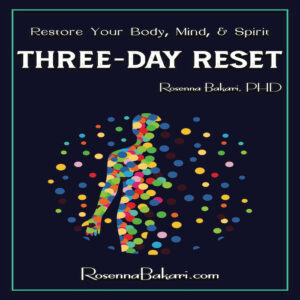Trauma Does Not Need Memory

Childhood is a precious time of being when people who love you cater to your every whim. You get to make as many mistakes as you need to learn how to become your best self. People constantly remind you how cute, intelligent, and important you are. They protect your environment so that you believe it too. That experience is optimal for children to grow into their purpose as adults. In the absence of such a childhood, some other results occur.
According to an article on child maltreatment and adult suicidality, approximately 30% of American adults have experienced abuse during childhood. A broad range of physical and emotional adult adverse effects are associated with childhood trauma, including suicide ideation. Many survivors struggle to get a grip on life and cling to the question, what would I have been if I hadn’t been abused?
The Over-Sized Question
The question “what would I have been?” is not rhetorical. It points to an inherent understanding that trauma changes the brain. Research shows that survivors of childhood trauma process information differently from adults without childhood trauma. Survivors tend to take fewer risks and isolate as preferred coping behaviors. These specific coping mechanisms could draw survivors’ attention away from their life purpose. Questioning the potential of an alternate life outcome won’t change things. However, understanding the potential for a more fulfilling life is a hopeful step on the healing journey.
Most survivors have meaningful careers, families, and social support systems. Still, trauma survivors are prone to a sense of life dissatisfaction, which causes them to wonder what would have been different. A better outcome cannot rely on a wish for the absence of trauma. The trauma experience cannot be reversed, but trauma responses can be neutralized. The sooner the trauma responses are neutralized, the more likely survivors are to reconnect with their purpose.
The trauma experience cannot be reversed, but trauma responses can be neutralized.
In the face of danger, trauma takes our attention hostage. The trauma response sets in the mind when we cannot stop a threat. Imagine this scenario. A 27-year-old man named Ashton was stung by a bee as a child. Unfortunately, he was allergic to bee stings. He was hospitalized for three days and was in a lot of pain. Twenty years later, he still refuses to spend time at the park for fear of being stung. I’m sure you are starting to see the point, but let’s break it down.
The Nature of Self-Defense
Not one day since Ashton was four-years-old did he wake up and consciously decide to stay away from the park. Instead, his avoidance became an unconscious adaptation of living. He barely remembers being in the hospital or that his parents never took him to the park after that day. Ashton’s defenses are working at the subconscious level to make him feel safe.
Three unconscious elements are working for him. 1) He avoids any situations that would put him around bees. He prefers cold weather and dislikes the summer. He attributes this to his Norwegian heritage despite being a 4th generation New Yorker. 2) He generalizes the threat of bees. So, he doesn’t go camping because he hates flying insects. He even refuses to eat any food that has an image of a bee on the label. He is unaware of these responses because he sees them as preferences. 3) He overreacts to any situation that exposes him to bees. Once, while walking with his three-year-old niece, she picked a tiny flower. He noticed a single bee about 20 feet from him just as his niece held the flower up to show him. He snatched the flower from her, threw it to the ground, and rushed away, telling her not to dirty her hands. He didn’t notice his heart racing or the harsh tone of his voice. The trauma response directs the brain to do three things:
- Avoid the thing that made you unsafe.
- Generalize the thing that made you unsafe.
- Over-react to the thing and its similarities.
Get ARTICLES DELIVERED TO YOUR INBOX
Normalizing the Trauma Response
Many survivors who claim they are unaffected by their trauma operate in trauma-response mode. When trauma responses occur on the subconscious level behavior patterns are normalized. Finding your purpose is highly unlikely in trauma-response mode. Ashton will never be a beekeeper, work for Bumble Bee Tuna, become a florist, backpack across the country, or marry a person whose favorite color is yellow. He has already made a flurry of decisions that unconsciously related to his fear of bees. He embedded his responses in his personality and accepted a limited life experience.
Unlike Ashton, most adults with childhood trauma have been harmed directly by someone they trusted. In the absence of healing, their focus remains on “what would my life have been if….” Like Ashton, they are unaware of their trauma responses. The healing question to move them away from their trauma response is, “What can I do with my life if I heal my trauma?” Their focus must move to an active attempt to heal the trauma. The steps to do so are as follows.
Understand the situations you are avoiding based on trauma.
Understand how you are generalizing
Train your response system to align with threat levels instead of having hyper-reactions?
Leaning into Purpose
If your brain protects you from (mis)perceived threats, you cannot live fully in your purpose. Here’s why. Gifted adults living in their purpose typically follow these patterns. 1) They are much better than most people at what they are doing. Michael Jordan, Michelangelo, and Michael B. Jordan are examples.
These three namesake people performed at the top. Though many of us share fantasies about being at the top, trauma can make that fantasy feel like a nightmare. Being at the top brings exposure, which many trauma survivors avoid. Ashton missed one of the most common childhood experiences to prevent a threat — going to the park.
Survivors who had to remain unseen to be safe may unconsciously avoid situations that bring attention to them. For example, they may isolate at work or minimize their contributions to avoid criticism. They settle for lower management rather than striving to be at the top. People who live fully in their purpose live with a drive to go beyond their dreams. A brain in survival mode focuses on surviving instead of pursuing dreams.
2) To execute their dreams, people living fully in their purpose, like Michael, Michel, and Michael, discipline their lives toward their goals by putting everything on the line. They hyper-focus on their desires as if there is nothing else they can be. They take risks with their bodies and their minds. Jordan could do things with his body on the court that amazed people because he trained tirelessly off the court. Angelo painted ceilings! How uncomfortable must that be? Jordan B’s work ethic has been highlighted by many journalists and peers.
A hyper-focus on safety and comfort will undermine purpose. Survivors who are in trauma-response mode often spend their lives looking for comfort rather than opening themselves up to risks. They stick close to society norms and are often perfectionists or people pleasers. Living in your purpose often requires you to run ahead of the pack or separate from the crowd. If survivors’ purpose is outside their comfort zone, they may not live fully in their purpose, no matter how much talent they have.
A hyper-focus on safety will undermine purpose.
3) Living in your purpose creates expansion in your life. But, survivors often minimize their experiences for simplicity and comfort. Their minds are unconsciously preoccupied. So, opportunities to development purpose is limited. Purpose fills your life with meaning, not just busy tasks and distractions. Giving, doing, and being, feel natural and the exaggerated response is toward things related to your gifts, not your fears.
Purpose goes unrecognized or overlooked for the familiar or predictable when safety is the goal. Creative solutions that support your purpose may be dismissed. For example, separating from family, furthering education, and reaching out for help may feel too risky. Even gifted people miss the mark and get rejected sometimes. But, their sense of moving toward something keeps them trying. Survivors’ sense of moving away from something may make them give up.
Healing On Purpose
Coping strategies aimed at safety can blind you from your purpose. When the need for safety buzzes around your head, you take fewer risks, and you are less creative. Your talents remain underdeveloped or unnoticed. You live with the question tucked in your head instead of moving forward in your healing to become the best version of yourself.
Finding your purpose is invariably connected to your healing journey. If you heal on purpose, you are more likely to find your purpose. Trauma does not have the final word on your life outcome. How much you heal from trauma does.
References
Angelakis, I., Gillespie, E., & Panagioti, M. (2019). Childhood maltreatment and adult suicidality: A comprehensive systematic review with meta-analysis. Psychological Medicine, 49(7), 1057–1078.
Futa, K. T., Nash, C. L., Hansen, D. J., & Garbin, C. P. (2003). Adult survivors of childhood abuse: An analysis of coping mechanisms used for stressful childhood memories and current stressors. Journal of Family Violence, 18(4), 227–239. https://doi.org/10.1023/A:1024068314963
Hughes, K., Lowey, H., Quigg, Z., & Bellis, M. A. (2016). Relationships between adverse childhood experiences and adult mental well-being: results from an English national household survey. BMC public health, 16, 222. https://doi.org/10.1186/s12889-016-2906-3




